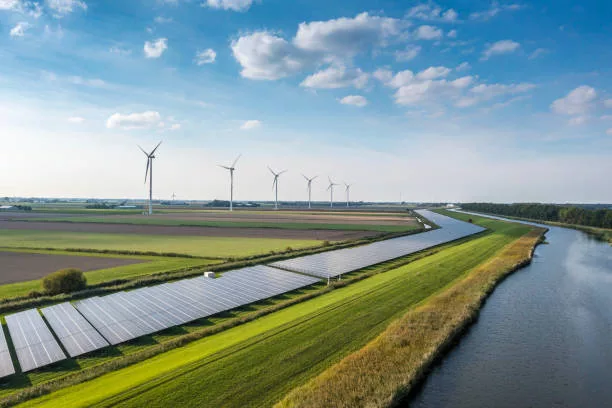With the Biden Administration’s fervent steps towards a sustainable future, the U.S. Department of Energy (DOE) is spearheading an initiative to revolutionize the production of rare earths and other essential minerals—fueling the nation’s clean energy sectors and fortifying security through decreased foreign dependency.
Strategic Investments to Reinvigorate American Industry
A strategic infusion of $17.5 million, derived from the robust Bipartisan Infrastructure Law, is set to invigorate four groundbreaking projects. These endeavors are tailored to cultivate affordable, eco-conscious methodologies for onshore mining of critical minerals using coal derivatives. Secretary of Energy Jennifer M. Granholm articulates the vision of President Biden’s Investing in America agenda, envisioning a future where the once burdensome coal by-products become a treasure trove of vital resources for renewable technologies.
The importance of rare earth elements can hardly be overstated, figuring prominently in crucial sectors from national defense to the burgeoning market for clean energy innovations, such as wind turbines and electric vehicles. Tapping into an abundant domestic reserve promises to reshape America’s industrial narrative and spur job creation.
Local Resources for Global Impact
The staggering volume of untapped coal reserves and associated by-products in the United States—exceeding 250 billion tons—beckons as an untold wealth of critical elements. Extensive research propels the DOE to harness these secondary sources, mitigating the nation’s 80% reliance on imported rare earth materials, thereby strengthening economic resilience and asserting global leadership in clean energy.
Project Highlights: Pioneering Techniques for Material Recovery
Four selected research institutions stand at the frontier of this innovative surge, their projects aimed at refining the separation and extraction processes of those invaluable materials. These are not only promising advancements in terms of resource acquisition but also bear the potential to rehabilitate areas marred by past mining activities. Here’s a closer look at these trailblazing projects:
- University of Kentucky Research Foundation (Lexington, Kentucky) will spearhead pilot-scale explorations to refine aqueous mixes of rare earth elements and further isolate high-grade oxides and other vital chemical compounds, paving the way for sustainable production dynamics.
- West Virginia University Research Corporation (Morgantown, West Virginia) is set to elevate materials from drainage treatments to purified rare earth oxides and beyond, diving into the alchemy of transforming them into metallic states while harnessing additional critical minerals in the process.
- Pennsylvania State University (University Park, Pennsylvania) focuses its sights on recovering and refining a bouquet of mixed rare earth oxides along with other strategic minerals, charting a path forward for industrial utilization.
- Microbeam Technologies Incorporated (Grand Forks, North Dakota) will showcase their prowess in extracting high purity gallium and germanium from lignite sources, demonstrating a scalable bench-scale system that could redefine resource recovery.
As these projects delve into the potential of acid mine drainage fluids and coal waste by-products, they will not only procure precious rare earths and minerals but also restore balance to ecosystems, transforming ravaged landscapes into rejuvenated habitats for diverse life forms.
The National Energy Technology Laboratory (NETL), functioning under DOE’s Office of Fossil Energy and Carbon Management (FECM), takes the charge in overseeing these meticulously chosen projects. As the projects unfold, they are mandated to tailoring Community Benefit Plans to ensure that the developments meaningfully reciprocate to the localities they inhabit.
Expanding Horizons in Mineral and Material Advancements
DOE’s latest announcement is only a fraction of a broader agenda. FECM has already funneled an estimated $133 million since January 2021 towards a varied array of projects that target the entire lifecycle of critical minerals and materials—from exploration and identification to production and processing. Recently, a portion of this funding has been earmarked for burgeoning front-end engineering studies, setting the stage for the development of rare earth production facilities leveraging unconventional feedstock materials.
FECM plays a vital role in minimizing the environmental and climatic footprint of fossil fuels and associated industrial processes. Its sweeping strategy spans across carbon management technology spectrums, from capture and conversion to removal, transport, and storage, including the mitigation of methane emissions and critical mineral production, all converging towards the singular goal of a net-zero emissions economy.
